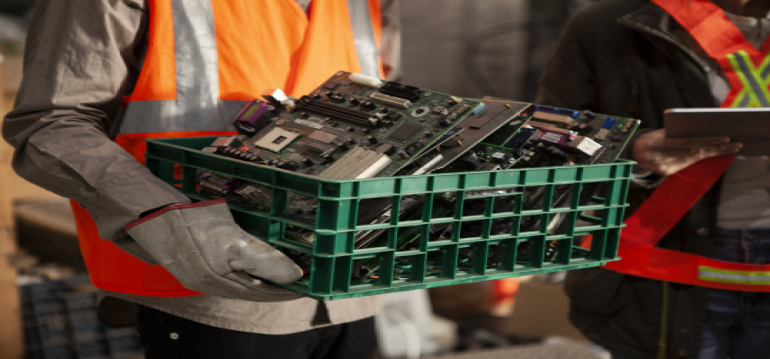According to the Global E-waste Monitor 2020, a record 53.6 million metric tonnes (Mt) of e-waste – discarded products with a battery or plug such as computers and mobile phones – was generated worldwide in 2019, up 9.2 Mt in five years. The report also predicts global e-waste will reach 74.7 Mt by 2030, almost double the 2014 figure, fuelled by higher electric and electronic consumption rates, shorter lifecycles and limited repair options.
There is an urgent need to reduce this figure to protect public health and the environment and to reduce costs.
With consumers continuing to purchase electronic devices at a rapid rate and hardware technology continuing to advance, manufacturers have both a responsibility and an opportunity to revolutionise the supply chain, prevent tech hoarding and reduce e-waste.
Manufacturers do, after all, play an important part in driving the circular economy and have the power to promote the right to repair movement so that it reaches many communities and we can all see the benefits. Here we outline five key ways they can go about doing this.
1. Promote the Right to Repair
One way for manufacturers to reduce e-waste is to actively seek ways to make it easier for consumers to repair their electronics, provide key information in manuals and guides and partner with businesses who will make repairs a seamless experience too.
There is a great potential here, as the popularity of repair cafés testifies. Backed by manufacturers, businesses could partner with local restaurants/cafes/universities and offer their expertise, create awareness days, repair days etc. to support the movement. This will give them a competitive advantage as consumers want the right to repair to be a reality.
2. Anticipate and embrace legislation
Regulatory restrictions are expected to tighten over the years; there’s no way of avoiding them, but anticipating them can help manufacturers adapt their processes and operations sooner, save money and keep a competitive advantage as consumers are increasingly demanding sustainability from all businesses. This is a great chance for electronic design manufacturers to support consumers in making more sustainable decisions.
3. Design for repairability and recyclability
Practical solutions like liquid proof coatings help manufacturers to protect electronics from the dangers of water damage but they can also make devices more repairable from the start than their mechanical seal competitors, helping to eliminate the need for full replacement. The use of ultra thin coatings will increase the reliability of such devices and help ensure they are sustainable and environmentally friendly. In line with this, P2i’s technology not only gives manufacturers design freedom, but also ensures liquid protection remains for the lifetime of the product.
4. Implement recycling programmes
Many manufacturers today are looking to manage their own e-waste and search for elements that can be reused, recycled or responsibly disposed of. Going a step further and implementing company-wide schemes and recycling programs would make it easier and encourage consumers to return their old or broken devices.
5. Support the circular economy
In a circular economy, manufacturers should be continuously focusing on reducing e-waste by reusing resources. Materials can be added to one device before the device is then used and returned – and the material reclaimed. The materials can then be added to a second device and the cycle is repeated. P2i is passionate about making this possible and extending the life of devices through the use of our technology to ensure electronic components are protected from harsh environments.
Seizing the opportunity
The global problem of e-waste is a serious one and it is only getting worse. Electronics manufacturers have the opportunity to address this by supporting the right to repair movement and the circular economy, by implementing recycling programmes and critically too, by ensuring they put repairability at the very heart of their design process.
More information about P2i’s range of ultra thin coating technology and how it can play a part in making devices more repairable and therefore in reducing e-waste can be found here.

